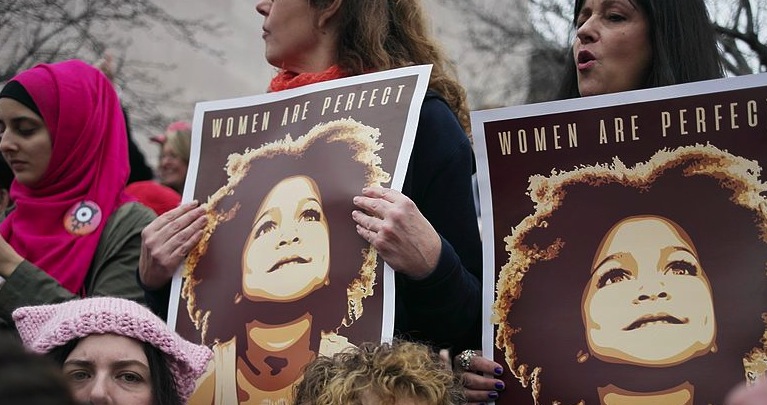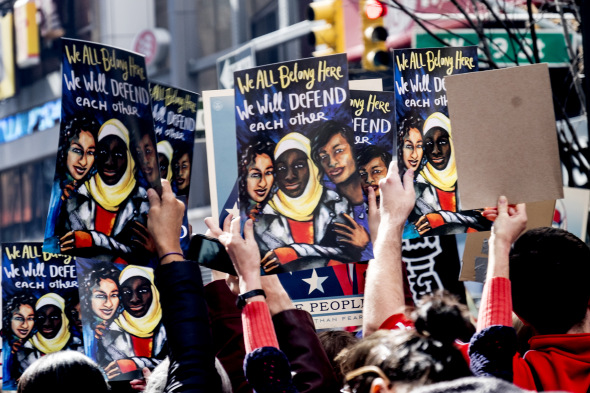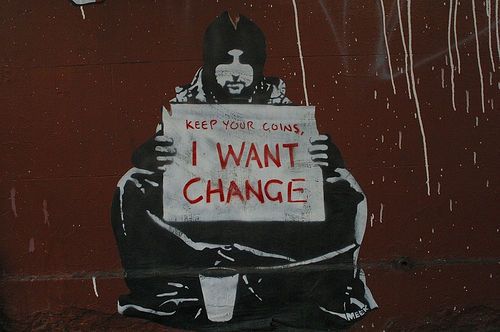Jan. 21 will mark one year since the worldwide movement of the Women's March made history.
In Washington, D.C. alone, an estimated 500,000 people, mostly women, flooded the streets to march, chant, and hold up well-crafted signs with powerful messages of resistance.
It was a long, wintry day but no one seemed to mind. They just buttoned up their coats and kept marching.
One woman held up a sign, created by Artist Jessica Sabogal, that displayed a beautiful little bright-eyed girl with the caption, "Women are perfect."
Another woman carried a poster, created by Artist Shepard Fairey, that illustrated a stunning woman who donned the American flag as a hijab, with the words, “We the people are greater than fear.”
Others revealed bold, sometimes comical, signs that they made themselves.
The signs were so remarkable; people created Instagram pages like "nasty signs" and published books such as "Why I March" to showcase them after the Women’s March was over.
Those pieces illuminated the powerful message of the people that cold January day. That’s what makes this type of art extraordinary.
Activist art is evocative. It drives crucial points home. It elicits action. It’s memorable.
It can empower the sender and the recipient. It can be graceful and bold. It’s beautiful. It’s ugly. It’s the revelation of the truth of its creator.
This influential art comes in many forms: creative writing, exhibitions, street art, music and film.
Poets like Rupi Kaur and Nikita Gill elicit powerful responses from their readers through social media.
Sometimes the artist makes a promise. “I resist the temptation of my / tired feet and keep marching / with tomorrow in one hand / and a fist in the other / I will carry you to freedom,” Kaur wrote in her “Valentine’s day ode to the world.”
Kaur was referred to as the Instagram poet who outsold Homer ten to one by Molly Fischer of The Cut.
Sometimes the artist makes you aware of the way things are so you’re not bulldozed by society.
“They won’t tell you fairytales / of how girls can be dangerous and still win / They will only tell you stories / where girls are sweet and kind and reject all sin,” read an excerpt of Gill’s “Girls of the Wild.”
Gill warns girls not to succumb to the pressure of portraying themselves as innocent in order to be considered feminine.
One reader coyly joked, “This totally didn’t make me cry.”
“It’s time for audacity in politics and beyond.”
-Roxane Gay
Activist art enhances a movement and prolongs the feeling of inspiration long after a protest has ended.
The Museum of the City of New York is currently showcasing an exhibition entitled, “Beyond Suffrage: A Century of New York Women in Politics,” through July 22.
This exhibition includes a film about the legacy of Shirley Chisholm, the first African American woman to be elected into Congress in the 1960s. Hopefully, this film will empower more girls and women of color to follow their political passion all the way to Congress.
According to MCNY, Artists Kate Gilmore and Tania Bruguera will explore the relationship between art, activism, and social change through discussion and performance as a method of critiquing politics, gender and society during their exhibition.
Activist art is a movement in and of itself. It can serve to enhance grassroots movements and stand on its own. Activist art has the power to move people on local, national and international levels.
Art for activism is indispensible when it comes to protesting social issues.
How can you look at Syrian Artist Abdalla Al Omari’s depiction of President Trump as a starving refugee in his “Vulnerability Series” and not contemplate it for a while?
How could Artist Tatyana Fazlalizadeh’s street art for her “Stop Telling Women to Smile” series not stop you in your tracks if you saw it plastered on a city building, scaled up so it’s towering over you?
This art is insightful and mind-blowing and absolutely necessary. It sheds light on social issues and holds political leaders accountable for their actions.
Sometimes it opens our eyes to a social issue we weren’t aware of. Other times it offers a solution to a social issue that we hadn’t yet considered.
Activism art is a pillar of political expression and in the words of Author Roxane Gay, “It’s time for audacity in politics and beyond.”






